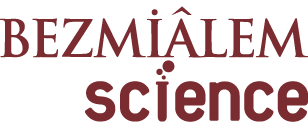ÖZET
Amaç:
Bu çalışmanın amacı serebral palsili (SP) çocuklarda fonksiyonellik, özür ve sağlığın tanımlanmasında İşlevsellik, Yeti Yitimi ve Sağlığın Uluslararası Sınıflandırması-Çocuklar ve Gençler (ICF-CY) versiyonunun kullanım etkinliğini incelemektir.
Yöntemler:
Çalışmaya yaş ortalaması 9,13±2,2 yıl olan (6-13 yıl) 30 diplejik veya hemiplejik SP’li çocuk (13 kız; 17 erkek) katılmıştır. Oluşturulan ICF Kısa Set için SP’li çocuklarda sağlık ve fonksiyonelliğin tanımlanmasında en uygun olan 35 kategori seçilmiştir. Değerlendirmede ayrıca yürüme ve denge testleri, kaba motor fonksiyon ölçümü, Çocuklar İçin Bağımsızlık Ölçeği (Wee- FIM) ve Çocuk Sağlık Anketi-Anne/Baba Raporu da (CHQ-PF50) kullanılmıştır. Her bir çocuğun vücut yapısı ve fonksiyonu, aktivite ve katılımı ile çevresine ait kısıtlayıcı ve kolaylaştırıcı faktörleri kodlanmıştır.
Bulgular:
Çalışmanın sonucunda ICF kısa set vücut fonksiyonları ve aktivite-katılım ile yürüme ve denge testleri, Kaba Motor Fonksiyon Ölçümü-88 (KMFÖ-88), Pediyatrik Fonksiyonel Bağımsızlık Ölçütü (PFBÖ) genel olarak orta düzeyde ilişki bulunmuştur (p<0,05). ICF kısa set vücut fonksiyonları ve aktivite-katılım ile CHQ- PF50 arasında zayıf-orta düzeyde ilişki bulunmuştur (p<0,05). ICF kısa set çevresel faktörler ile yürüme ve denge testleri, KMFÖ- 88, PFBÖ, CHQ- PF 50 arsında genel olarak zayıf düzeyde ilişki bulunmuştur (p<0,05).
Sonuç:
Serebral palsili çocuklarda fonksiyon, özür ve sağlığın tanımlanmasında ICF’nin etkili bir kavramsal çerçeve olduğu, ICF sisteminin referans bir değerlendirme ölçütü olarak kullanılabileceğini ve SP’li çocuklarla çalışan fizyoterapistlere yol gösterici olacağını düşünmekteyiz.



